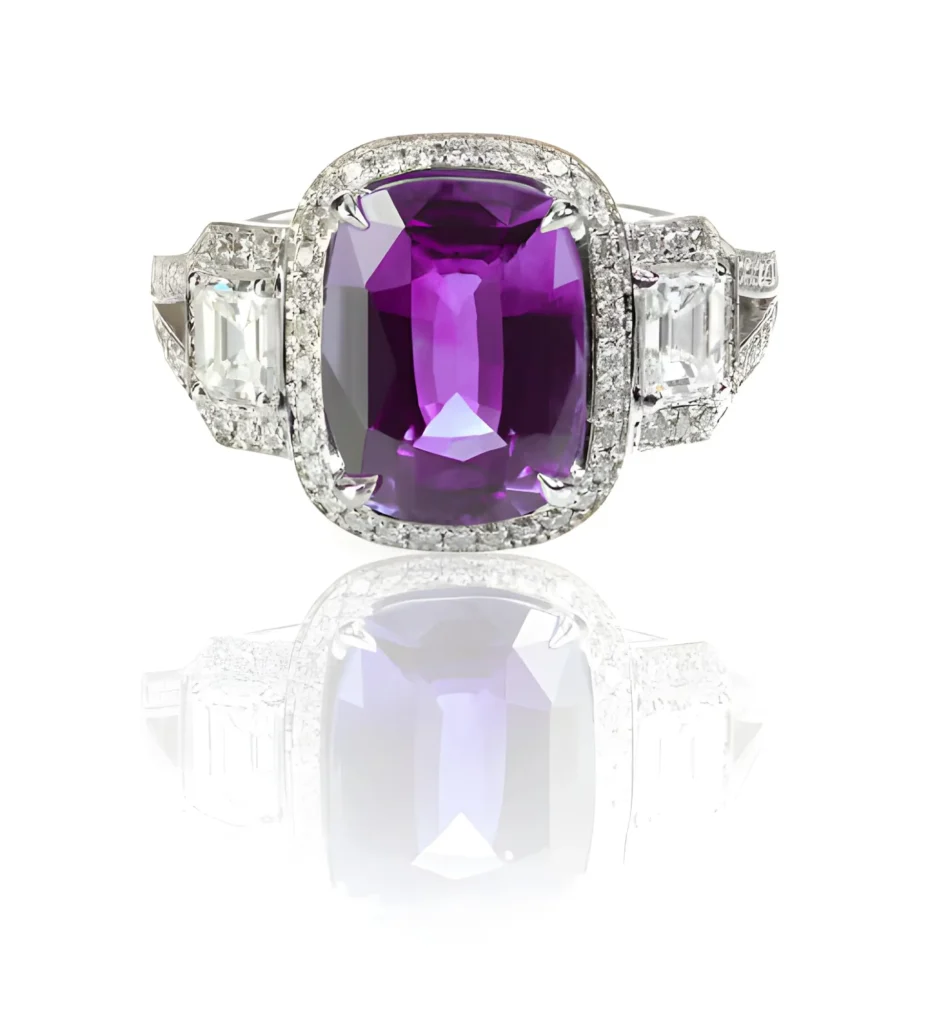Diamonds have dominated engagement rings for decades, pushed by marketing more than tradition. But something’s shifting. More couples want rings that feel personal, distinctive, and meaningful beyond what everyone else wears. An aquamarine engagement ring offers exactly that—a gemstone with stunning color, romantic symbolism, and beauty that stands apart from the predictable solitaire diamond. The pale blue to blue-green tones of aquamarine evoke oceans and skies, carrying associations with clarity, calm, and eternal love. It’s a choice that says you’re confident enough to skip trends and choose something that genuinely speaks to who you are as a couple.
The Gemstone’s Natural Beauty and Characteristics
Aquamarine belongs to the beryl family, the same mineral group as emerald. Its color comes from iron traces within the crystal structure, ranging from almost clear with just a hint of blue to deeper teal-blue shades. The most valued aquamarines show that pure blue color without green or gray undertones, though personal preference matters more than gemological rankings when you’re choosing something you’ll wear every day.
What makes aquamarine particularly suitable for engagement rings is its hardness—7.5 to 8 on the Mohs scale. That’s not diamond-level durability, but it’s substantially harder than stones like opal or moonstone that scratch too easily for everyday wear. With reasonable care, an aquamarine ring lasts generations. The stone is also quite clean typically, meaning fewer visible inclusions that might catch light oddly or create weak points in the crystal.
Symbolic Meanings That Resonate
Ancient sailors carried aquamarine as a talisman against drowning and seasickness. The Romans believed it absorbed the atmosphere of young love, making it an appropriate gift between spouses. More broadly, the stone symbolizes courage, clear communication, and emotional balance—qualities that serve marriages well beyond the romance of engagement.
For couples with connections to the ocean, whether through surfing, diving, or simply loving coastal life, aquamarine carries obvious personal significance. March babies might choose it as their birthstone. Others simply love the color and what it represents—something tranquil and enduring rather than fiery and passionate. Different relationships call for different expressions.
How Light Plays Through the Stone
Aquamarine is a “step cut” kind of stone—it looks best in emerald cuts, Asscher cuts, or other rectangular faceting patterns that create long, clean flashes of light rather than the sparkle of brilliant cuts. This gives aquamarine rings an elegant, sophisticated look that’s less flashy than diamond but more refined in its way.
The stone’s clarity lets light pass through cleanly, creating that watery depth that gives aquamarine its name (literally “sea water” in Latin). In sunlight, a quality aquamarine seems to glow from within. Indoor lighting brings out different aspects of the color—warmer tones emphasize any green notes, while cooler white light enhances the blue.
Practical Considerations for Everyday Wear
Aquamarine doesn’t require the extreme care that some colored stones demand, but it’s not quite as carefree as diamond either. The stone can chip if you hit it hard against something, so activities like rock climbing or heavy construction work call for removing the ring. Normal daily activities—typing, cooking, washing hands—won’t harm it.
Cleaning is straightforward. Warm water with mild soap and a soft brush keeps the stone bright. Ultrasonic cleaners are generally safe for aquamarine unless the stone has been treated or has internal fractures, though hand cleaning works fine and carries no risk. Avoid harsh chemicals and extreme temperature changes, which can damage the stone or its setting.
Pairing with Metals for Different Looks
White metals—platinum, white gold, or silver—complement aquamarine’s cool tones beautifully. The combination creates a cohesive, elegant aesthetic that lets the stone’s color take center stage. Yellow gold creates warm contrast that makes the blue more vivid, giving the ring a vintage or romantic feel. Rose gold with aquamarine produces a softer, more contemporary look that’s gained popularity recently.
The setting style changes the ring’s personality significantly. Vintage-inspired settings with milgrain details and filigree work suit aquamarine’s classic elegance. Modern solitaire settings keep focus purely on the stone. Halo settings surround the aquamarine with smaller diamonds, adding sparkle and making the center stone appear larger—though this somewhat defeats the purpose of choosing a non-diamond ring in the first place.
Also Read-Trendy Sneaker Options to Elevate Your Fashion Game







